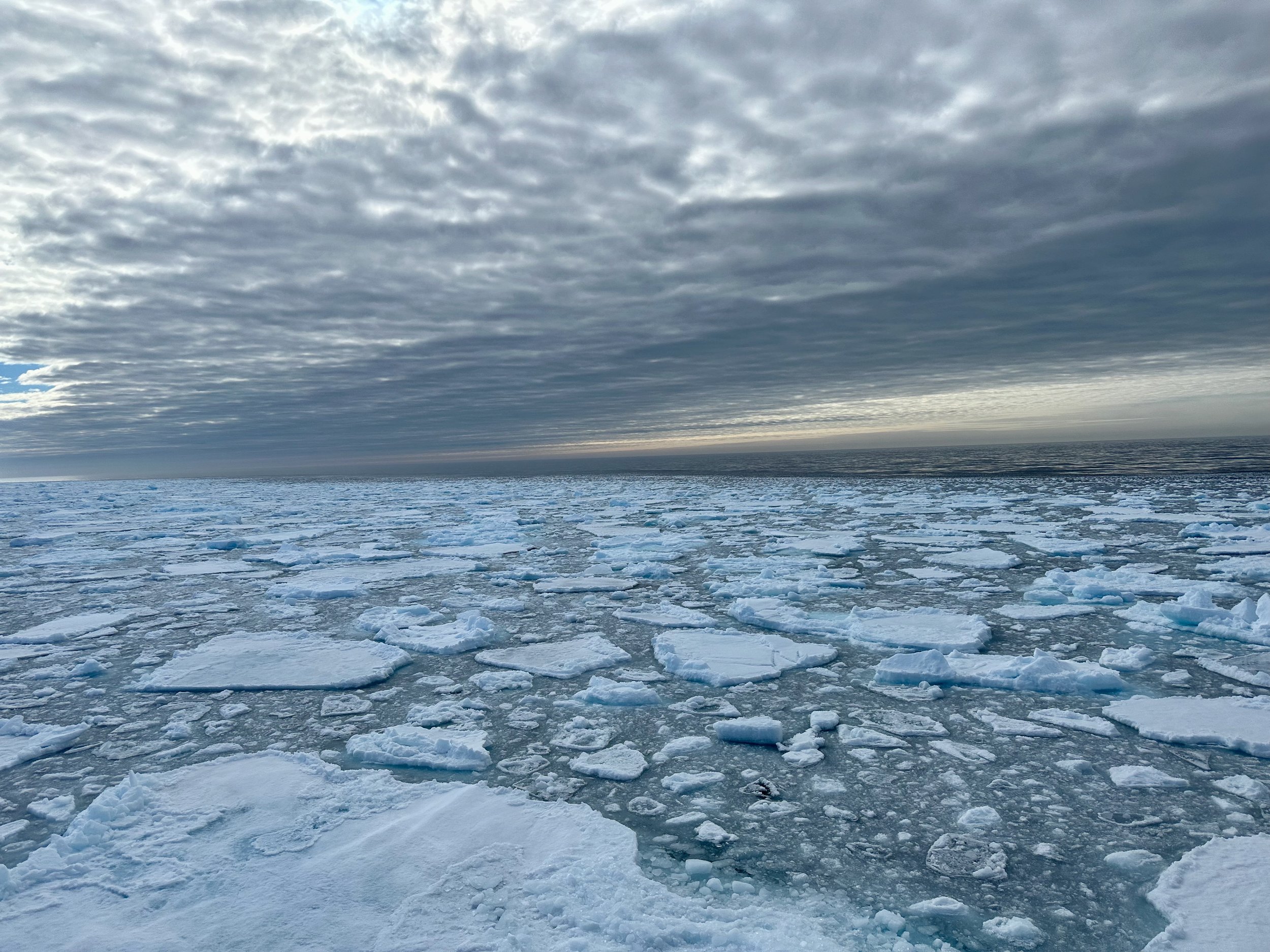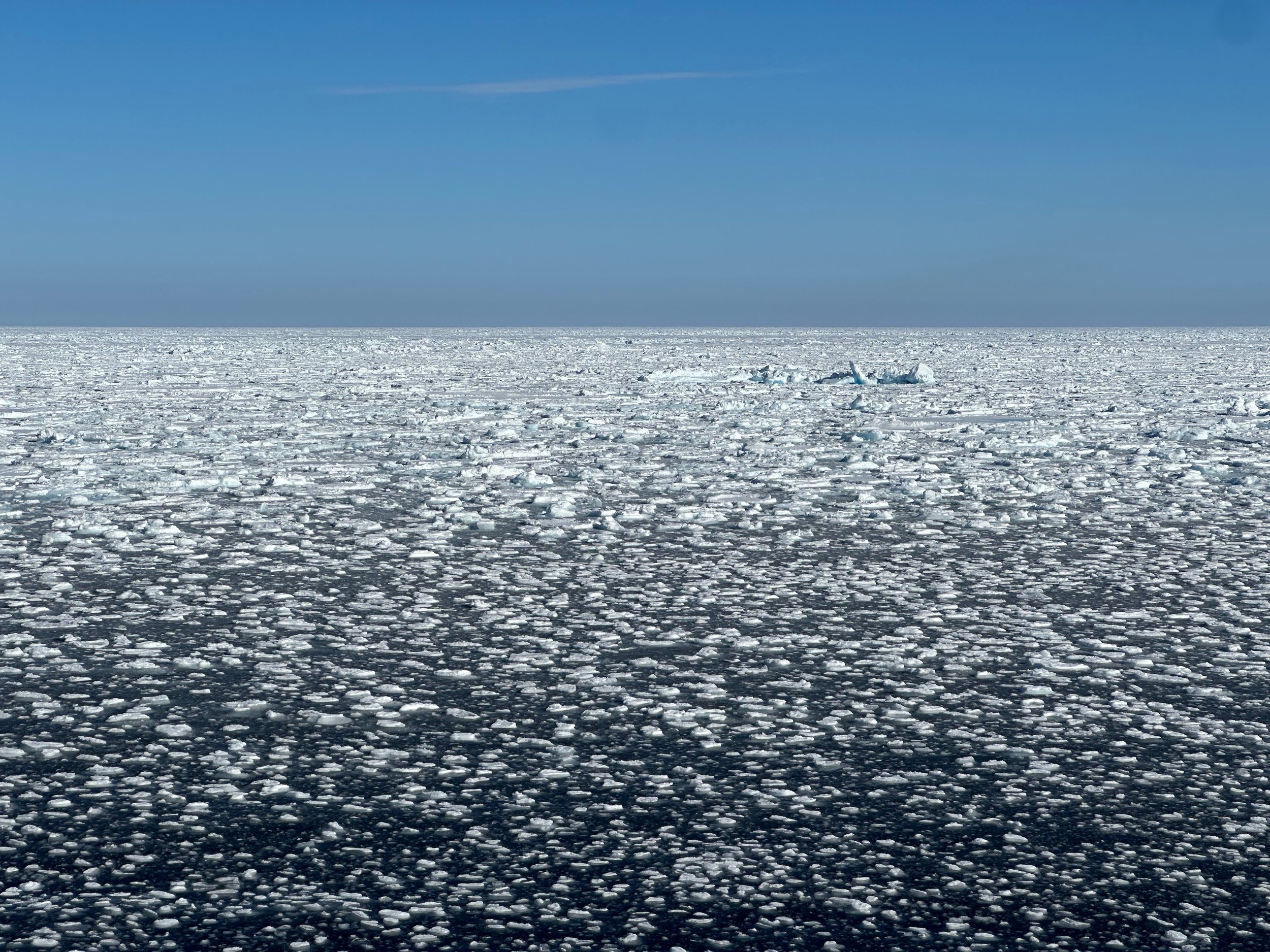This arctic cruise has been an unforgettable experience, full of adventure and wonder. In the interest of brevity, let me attempt to list some of the things I have learned. If you have questions or want more detail on any particular item, please follow up via email.
Polar bears will kill you
Glaciers are enormous
Polar sea ice is enormous but in a different way
Kayaking is the best way to see wildlife
Kayaking is a good activity for a fjord
I learned what a fjord is
Polar bears will kill you (and almost anything else for that matter)
Walruses like to take naps
Walruses are one of the few things a polar bear won’t kill
Bearded seals don’t really have much of a beard, but they do have whiskers
Bearded seals look like sad old men
Cruises are full of activities! Every day!
People who take adventure cruises are a little odd (present company included)
A beautiful sunny summer day in the arctic is like a beautiful sunny winter day in Detroit
Always wear layers when hiking because you might get hot
The water is cold (but still jump in, it’s fun)
Don’t fuck with polar bears (because one of you will die)
No polar bears were harmed on this trip but we did see three polar bears in the first two days. Apparently an arctic cruise for most people is just an elaborate polar bear safari, so the activity organizers are very focused on making sure everyone gets to see at least one polar bear. When we signed up it wasn’t the focus of my trip, but it became a major focus once I saw one.
The landscape is truly unreal, and seeing a bear move across it changes the way you see both the animal and the habitat. I believe the technical term for where we were isn’t even arctic tundra, it’s arctic desert, because it sustains so little life. The first polar bear we saw from zodiac boats, about 100 meters away. He was walking along the shore, stopping every once in a while to roll in the snow like a puppy or examine an old abandoned wooden cabin. You realize that this is his life, the many miles he travels in his day or in a season or in a lifespan, searching for the next meal. The next polar bears we saw on the actual polar sea ice, the vast expanses of frozen salt water at the north pole. Female polar bears go back to land to build dens and give birth to cubs, but a male polar bear can spend his entire life jumping from ice floe to ice floe in search of a seal to chomp on.
The presence of polar bears also meant that everywhere we went, even kayaking, we had someone with a rifle accompanying us. Including when we were in boats. The bears swim very fast. If we had seen a bear on any of the hikes or other outings, the rifle handler would have first tried to scare the bear away with a flare gun or a warning shot. But if that doesn’t work, the rifle is there to keep us alive. Polar bears are the most aggressive, biggest, most dangerous bear in the world.
Our bear safety precautions are also a way to protect the bears. As one of our guides put it, in a conflict between us and the polar bear, the polar bear will end up dead.
Photo credit Loup Supery
Other than polar bears, this trip became largely about kayaking. Kayaking was an optional activity on the cruise, but I felt sure that once on the boat I would be jealous if I wasn’t part of the “sea kayak club” as they call it. We had never done much (any?) kayaking before this trip, so I signed us up for a paddling tour on the Hudson a few weeks before we left. Then two days before we were getting on the plane for Europe, we received an email with the following warning:
We recommend, regardless of your previous experience, that you rent a sea kayak or, better yet, take sea kayaking lessons for at least two days before you join us. Even if you only have access to a lake, be sure to go out in a proper sea kayak (as opposed to a “sit‐on‐top” kayak or canoe) with a spray skirt and preferably a foot‐controlled rudder system for steering.
Our tour in the Hudson was very much a “sit-on-top” kayak, so I then signed us up for kayaking in Oslo the day before the cruise. Our instructor Sven was a little too hands-off for my taste, and he refused to teach us to steer with the rudder and foot pedals, instead insisting that we learn the “steering stroke” so that we could navigate with just paddles. (This did turn out to be useful.) The first day of the cruise the kayak master gathered together anyone who wanted to join the kayaking group and gave a big safety lecture about how you need to have kayaking experience. Half the people dropped out. The “sea kayak club” ended up only five people, including the guide.
Our guide, Loup, is French. He grew up in the Pyrenees near Spain, and he’s been kayaking since he was ten years old. He speaks four languages, including Norwegian. (For those who don’t speak French, his name means Wolf. Yes he was very handsome.) Every kayak trip was its own adventure, but I think the most spectacular was when we kayaked through polar sea ice, weaving our way between floating chunks of frozen salt water. It was a first even for Loup. The sea was calm and the weather was clear and sunny.
On a later trip in one of the fjords we came upon a bearded seal resting on an iceberg and floated past it, letting the current carry us without paddling. We were about ten feet from the seal, maybe less, as he looked right at us with his sad old man eyes. We kayaked almost every day of the cruise—we are now expert sea kayakers. I even learned how to steer with the foot pedals.

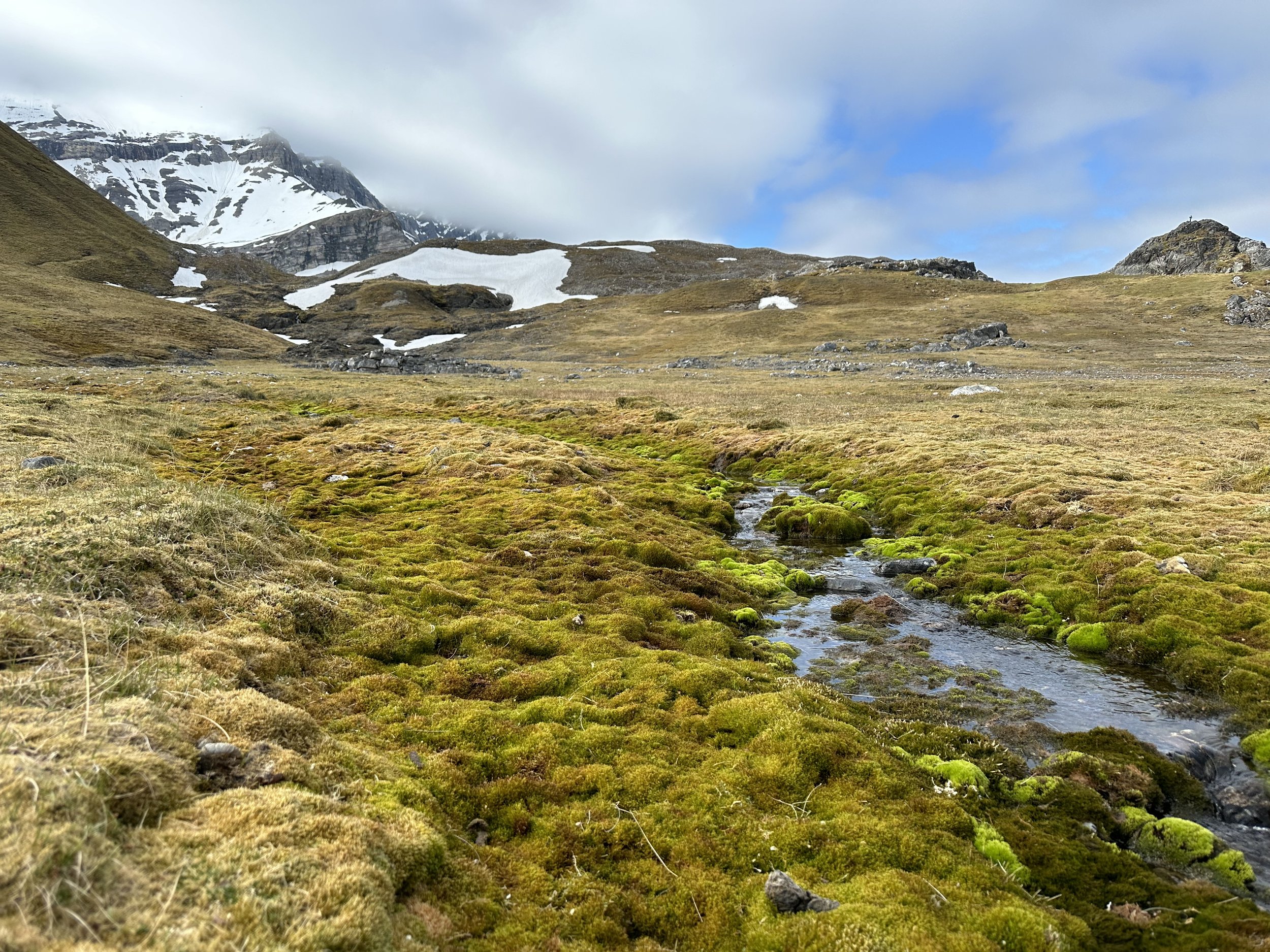
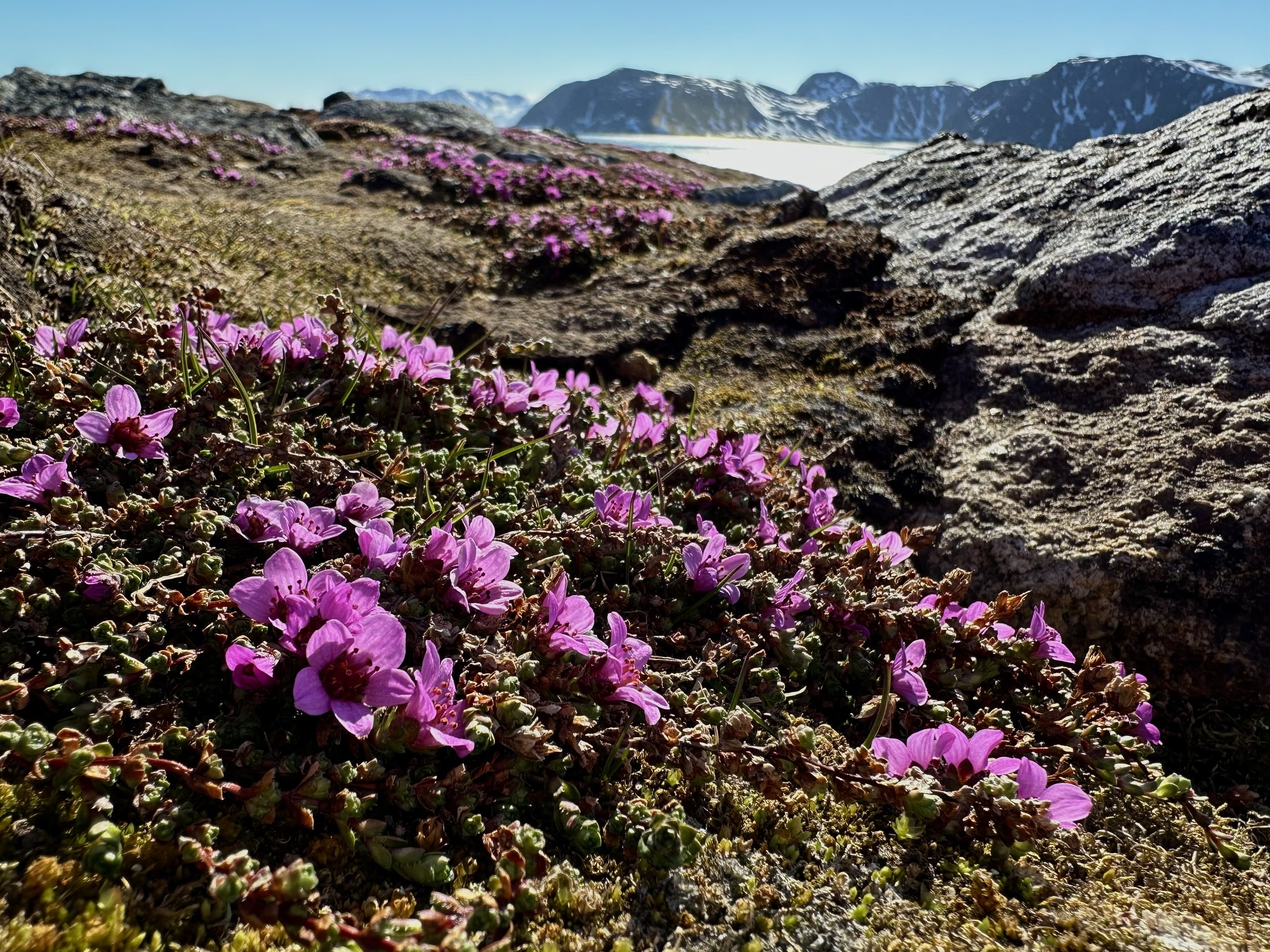

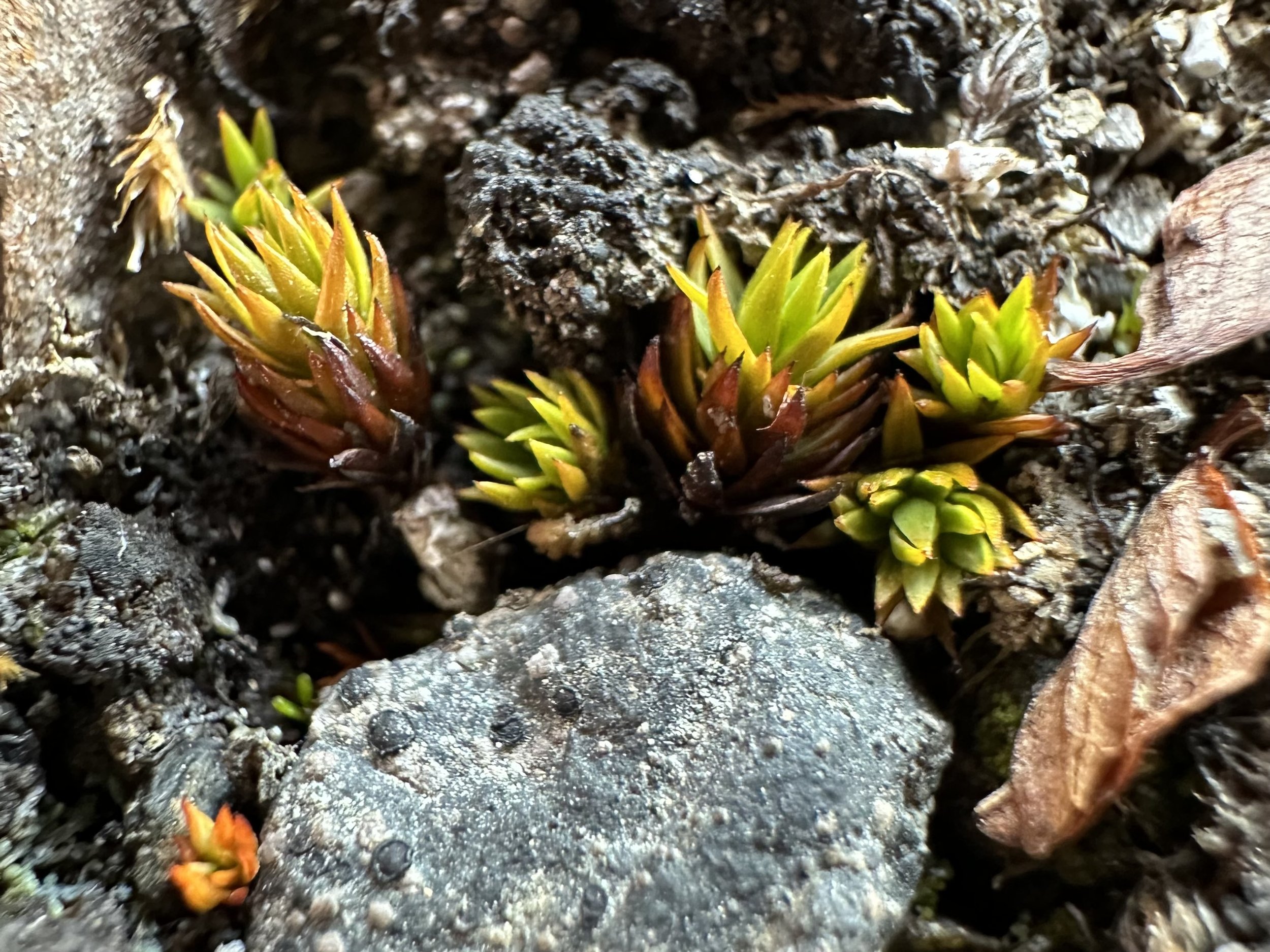
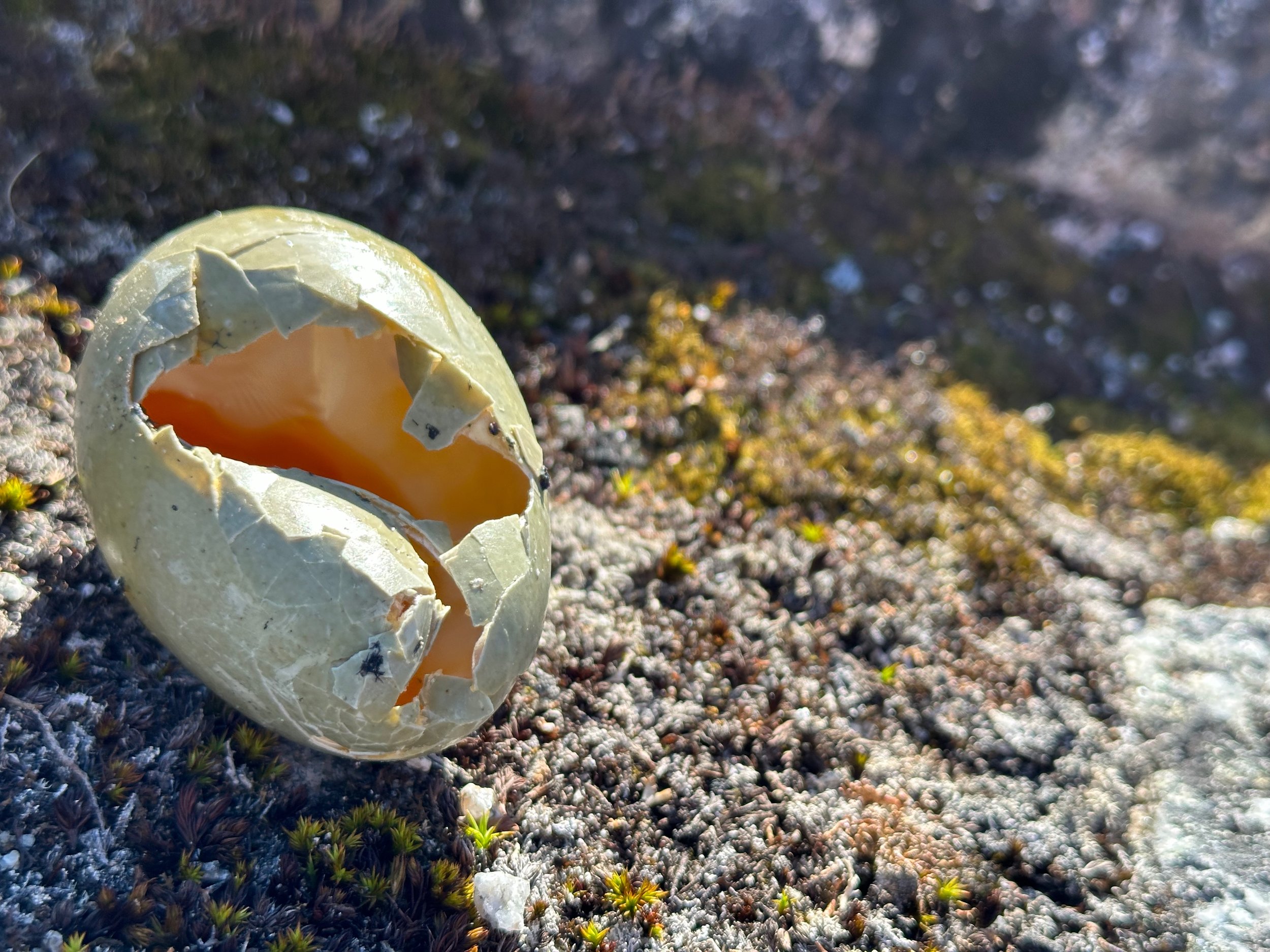
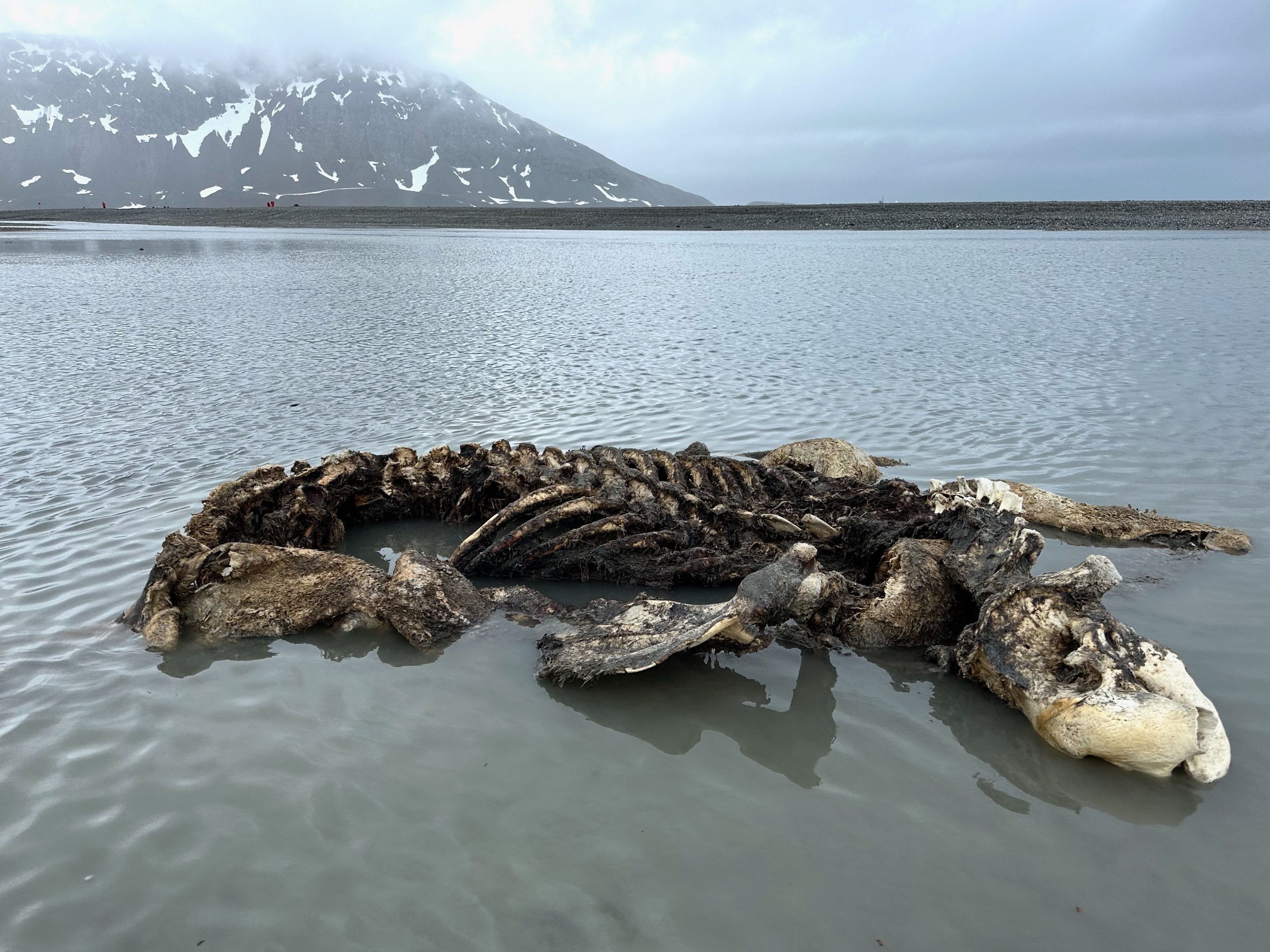
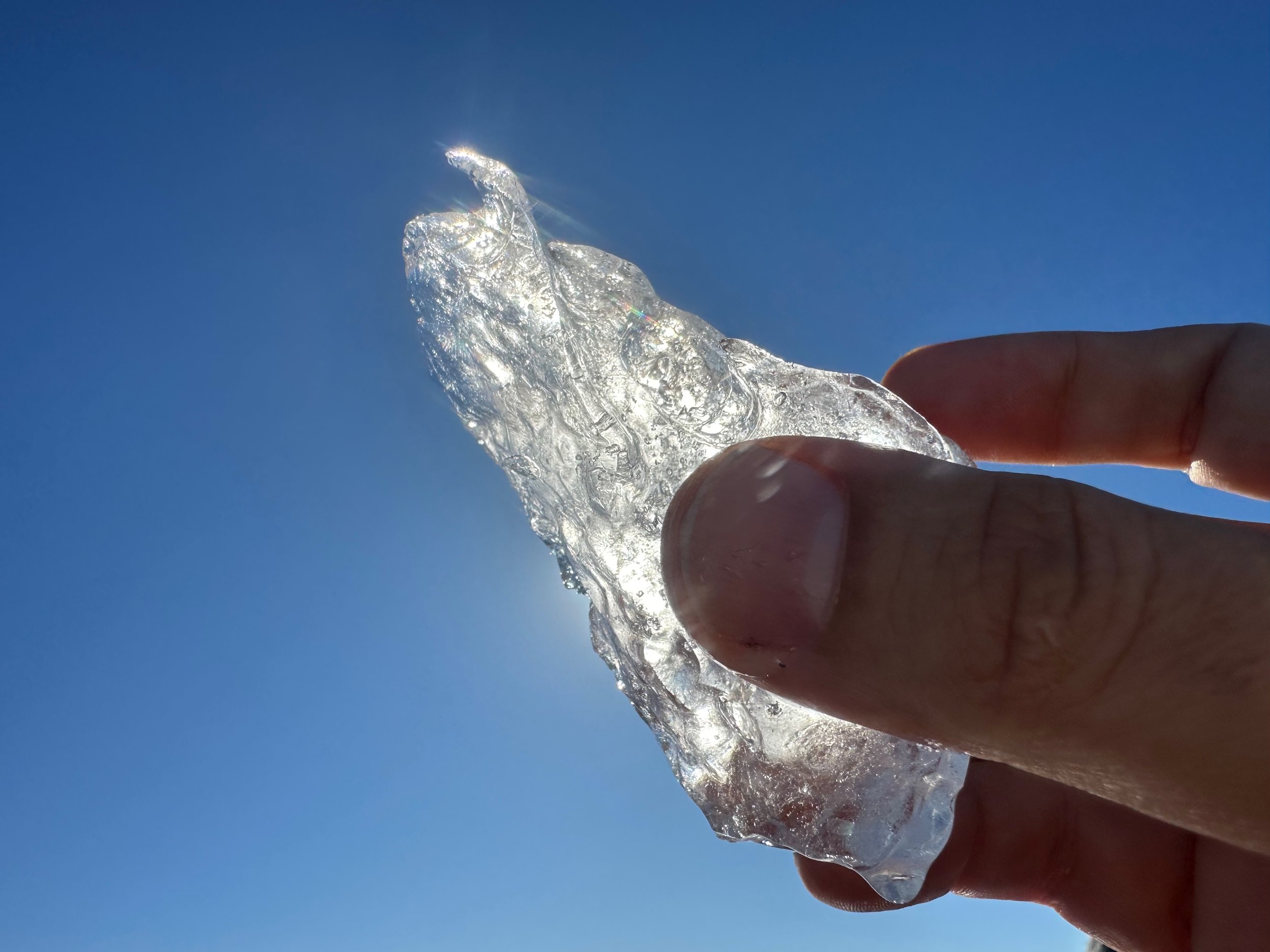

The beauty of the arctic environment is distinctly minimalist. There are no trees, not even any bushes. The plants don’t grow any higher than grass—most of them are mosses, with a few types of low-growing flowers. There are almost no insects, and absolutely no reptiles. The landscape consists almost exclusively of brown spiky mountains with stripes of white and an occasional monumental glacier. After days of this, one becomes a connoissieur of the subtleties of ice and earth. I love moss as much as trees now. And each glacier tells its own story of advance and retreat, with the occasional dramatic flourish as a chunk of ice the size of a New York brownstone crumbles into the water with a crack like thunder.
It’s hard to conceive of scale when you see these things, even in person but even less in photos. What looks like a snow bank after a particularly snowy Michigan night is actually a glacier hundreds of feet high. To be fair, a glacier is really just a snow bank that has accumulated over decades, slowly compressing under its own weight into ice so pure that it turns an aquamarine shade of blue. If there were trees or people or animals in the landscape there would be some reference point to understand the shapes we’re seeing. But there is only the unearthly arctic landscape itself.
The most mind-boggling sight had to be the polar sea ice. It is not dramatic, not even beautiful exactly. It just goes on and on and on, a flat white expanse of broken chunks of ice. Every once in awhile a piece juts up in a small triangle, but the ice is mostly flat, lower and smaller than the glaciers which build up on mountain tops. The sea ice is unlike anywhere else on Earth, its own territory of frozen landscape, unchanging for miles and miles. We were there for only one quiet, strange day but I would have stayed longer if I could.
